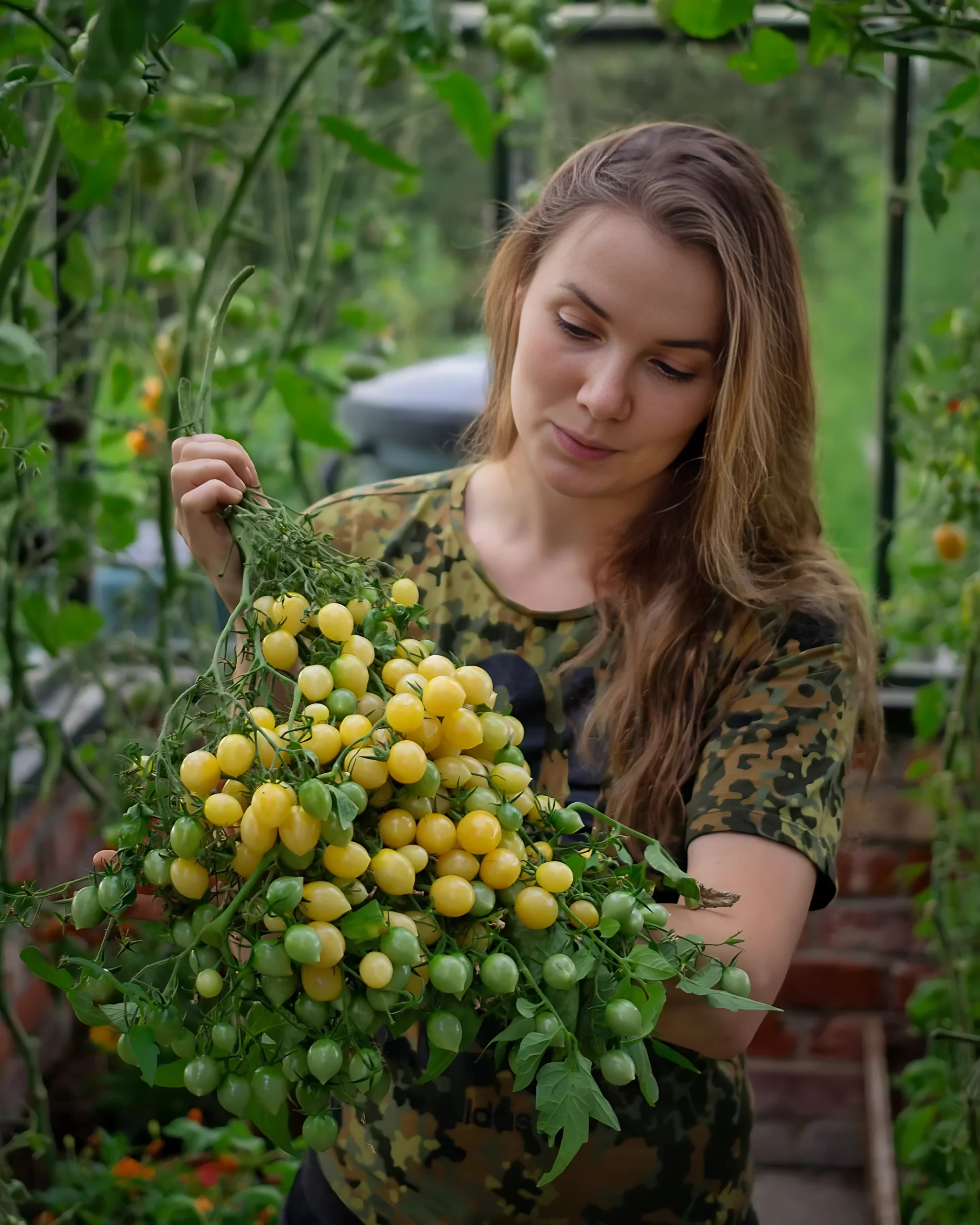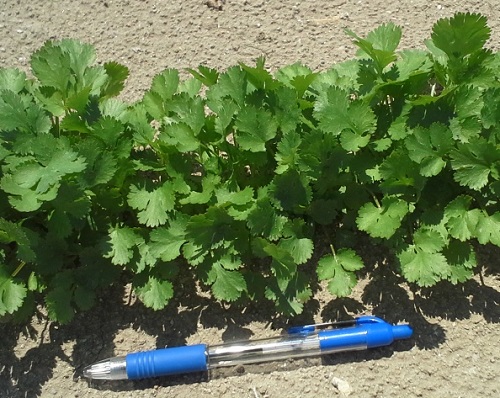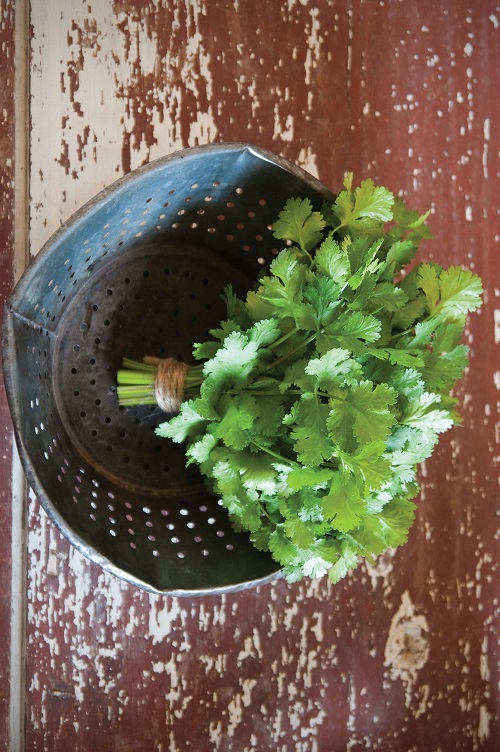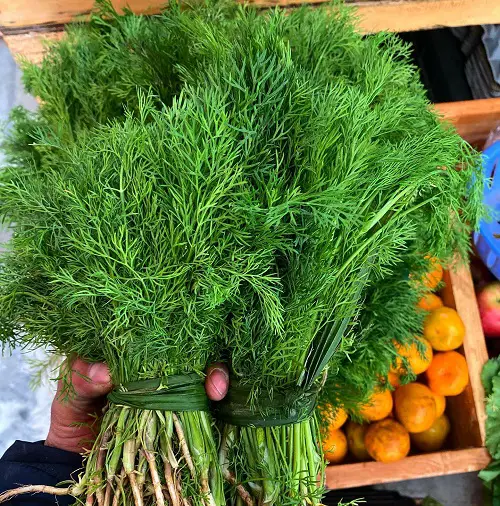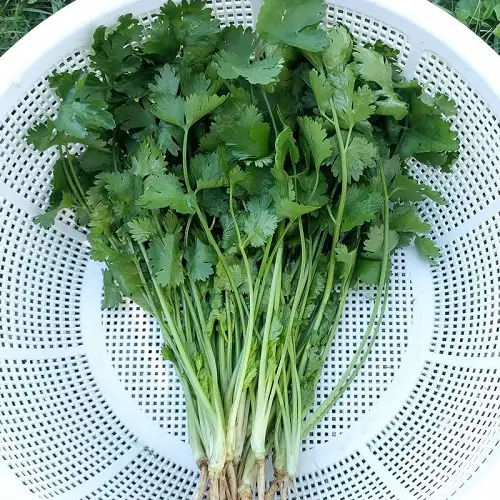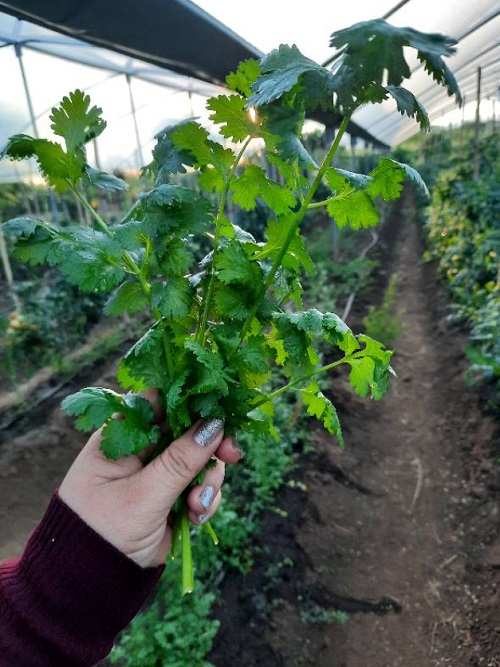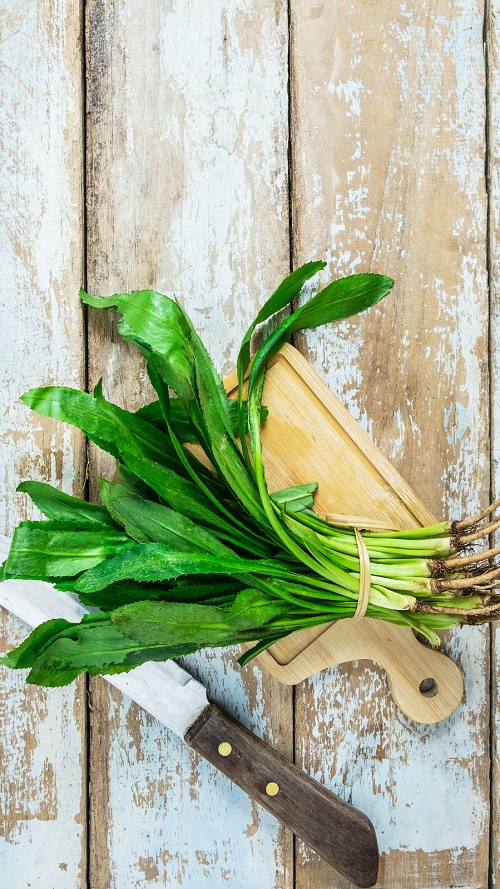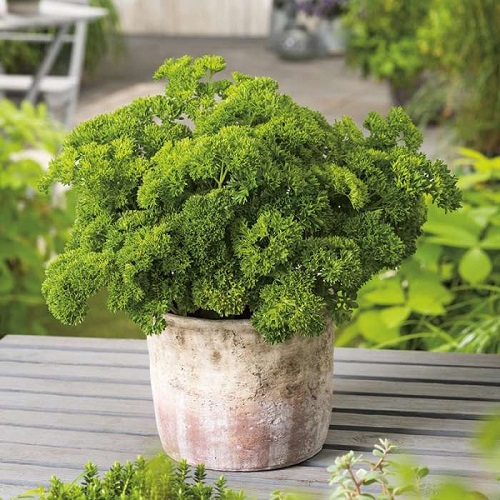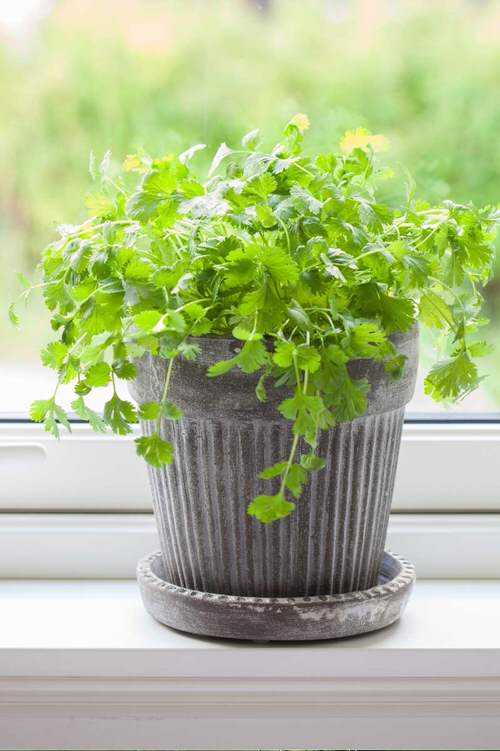Here is the list of Different Types of Cilantro and Coriander you can try growing for fresh aroma and amazing flavors.
Read about the Different Types of Cilantro and Coriander that you can plant in pots to enhance the flavors of various dishes!
Different Types of Cilantro and Coriander
1. Confetti
‘Confetti’ may surprise you with its unique features! Its leaves are finely divided and look wispy, similar to carrot or dill greens.
2. Calypso
‘Calypso’ grows into bushy plants and takes a long time before it starts producing seeds (slow to bolt). You can harvest fresh coriander foliage in 50 to 55 days.
3. Caribe
‘Caribe’ grows vigorously and has dark green leaves. It’s particularly suitable for greenhouse cultivation because it doesn’t go to seed quickly (slow to bolt).
4. Advanced Turbo II
It is fast-growing and has beautiful glossy green leaves. It doesn’t bolt (go to seed) as fast as other varieties. You can harvest it in bunches in just 35 to 40 days.
5. Dwarf Lemon
Unlike other coriander varieties, this one has a very noticeable citrusy taste. The plants are quite small, only reaching about 12 inches in height. It takes about 50 days to mature.
6. Cruiser
‘Cruiser’ has an upright growth pattern with dark green leaves. This variety maintains its excellent flavor even after flowering.
7. Delfino
Just like ‘Confetti,’ it has finely divided, feathery leaves, but ‘Delfino’ is even more productive. ‘Delfino’ grows bunches of foliage that are ready to harvest in 30-40 days.
8. Kanchanaburi
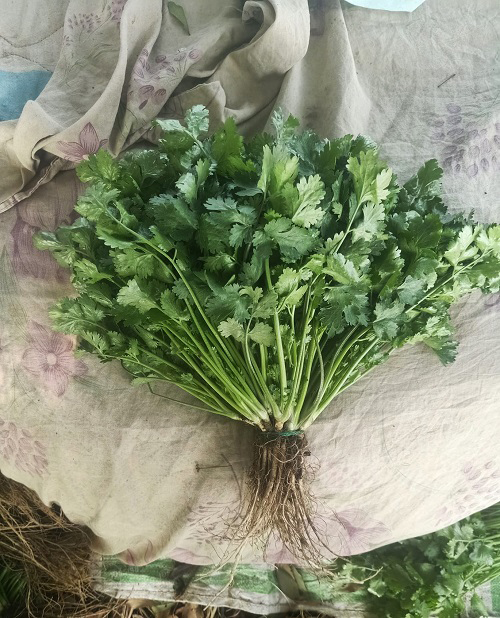
The ‘Kanchanaburi’ belongs to Thailand. It has short plants with aromatic roots that add great flavors to dishes when used for cooking.
9. Leisure
‘Leisure’ is one of the highly productive and slow-to-bolt. The leaves can be harvested about 50 to 55 days after planting.
10. Moroccan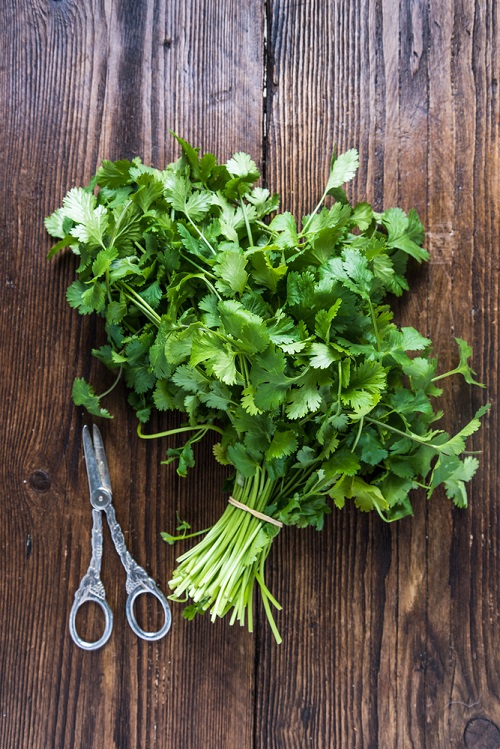
When you grow ‘Moroccan’ coriander, you can expect to harvest fresh leaves just 45-55 days after planting. If you want to collect the seeds, it takes a little longer.
11. Santo
‘Santo’ is a rapid-growing coriander variety. You can harvest bunches of fresh leaves in about 50 to 55 days after planting.
12. Rak Tamachat
‘Rak Tamachat’ is a variety of C. sativum and stands out because of its impressive size. Expect the fresh leaves to be ready for harvest about 50 to 60 days after planting.
13. Standby
This variety matures quickly, and you can expect to harvest fresh leaves in about 45-50 days after planting.
14. Sunmaster
‘Sunmaster’ can handle hot weather well and is exceptionally slow to bolt, meaning it takes a long time before it starts to flower and produce seeds.
15. Pokey Joe
This coriander is also called ‘Pokey Jo’ and has the unique trait of being slow to bolt. Gardeners appreciate its exceptional flavor.
16. Large Leaf
‘Large Leaf’ has been carefully developed to grow lots of leaves. It can produce up to three times more foliage than other types of coriander plants.
Other Herbs That are Called Cilantro or Coriander
“Cilantro” and “coriander” are two terms used to refer to the same plant, Coriandrum sativum, in different contexts and regions. The word “cilantro” usually refers to the leaves and stems of the plant, particularly in the United States, while “coriander” is often used to refer to the dried seeds, particularly in the UK and other Commonwealth countries.
However, due to differences in regional names and similar tastes or appearances, other herbs may sometimes be referred to as or mistaken for cilantro/coriander.
17. Papalo
Papalo is a type of herb with a unique flavor. People often describe its taste as combining flavors of cilantro, arugula, cucumber, and citrus.
18. Vietnamese Coriander
Vietnamese coriander resembles mint in appearance, but it actually belongs to the Polygonaceae family. It has a sharper and more peppery flavor.
19. Culantro
Culantro smells and tastes similar to cilantro, but it’s not the same plant. It has long, saw-edged leaves and looks a little like long-leafed lettuce.
20. Chinese Parsley
This is another name for cilantro, especially in areas where Chinese cuisine is prevalent. It’s called this because it’s commonly used in Chinese cooking.
21. Parsley
While not typically mistaken for cilantro/coriander due to its distinct flavor, parsley is visually similar and sometimes used as a substitute in recipes in place of cilantro.
22. Garden Coriander or Indian Coriander
This is actually the same plant as cilantro/coriander but is sometimes differentiated by these names in regions where both cilantro and culantro are used in cooking.
23. Salt Heliotrope
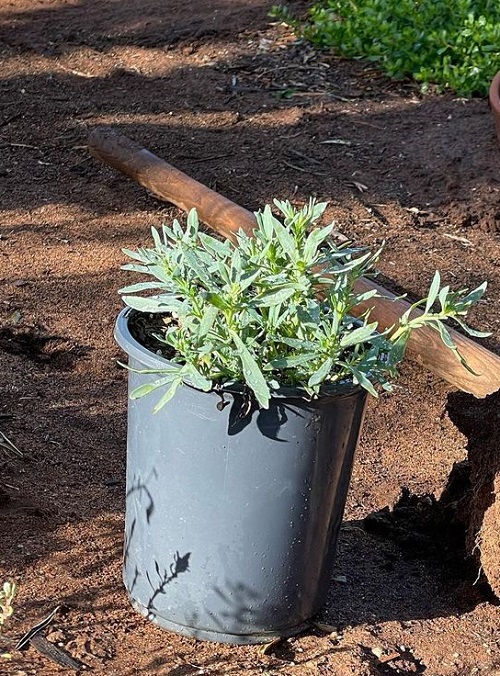
Known as Seaside Heliotrope, or Salt Heliotrope, this plant is not commonly used in cooking. People usually grow it as a green specimen for pots.

